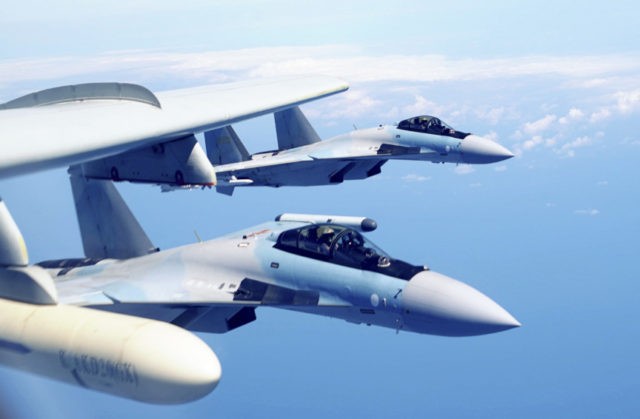A Chinese warplane entered South Korean airspace illegally three times on Thursday, forcing Seoul’s Air Force to scramble fighter jets in response, the country’s defense authorities revealed.
According to South Korea’s Joint Chiefs of Staff, a Y-9 type reconnaissance aircraft first entered the Korean Air Defense Identification Zone (KADIZ) at around 10:21 a.m. from an area near Jeju Island and Ieo Island and left it half an hour later. The aircraft then crossed in a second time at 11:54 a.m. and flew out just under an hour later, before making its final crossing at 2:14 p.m. and leaving the airspace at around 3 p.m.
Responding to the incident, Seoul deployed fighter jets to follow the aircraft and sent a warning message in what they described “normal tactical” measure. Their diplomatic measures included calling in a military attache at China’s embassy in Seoul to lodge a complaint and demand measures to prevent any future incidents.
A section of KADIZ overlaps with Chinese and Japanese air defense zones, a source of ongoing regional tensions. Military officials believe that the incident intended to test Seoul’s response. It is now the eighth time that Chinese planes have entered this particular KADIZ in 2018.
Air Defense Identification Zones (ADIZs) were established to help countries identify foreign aircraft in the vicinity of their international airspace boundaries. Although international treaties do not define the zones in question, it is standard practice to notify the nation concerned before entering its airspace. As a result, aircraft that crossing the zones are often the cause of international disputes between countries.
Overall incursions of Chinese military aircraft in South Korea have nearly doubled in recent years, which some analysts believe is China demonstrating its opposition to strengthening ties between Seoul, Tokyo, and Washington.
“According to the South Korean Air Force, the number of Chinese military aircraft entering its [defense] identification zone is rising. In 2016, there were about 60 incursions, 70 in 2017 and 110 were reported up to September this year,” the South China Morning Post reported earlier this month.
In October, a survey published by the Seoul National University found that South Koreans view China as a larger threat to peace on the peninsula than North Korea, the first time in the 11-year history of the survey that North Korea did not top the list.
Follow Ben Kew on Facebook, Twitter at @ben_kew, or email him at bkew@breitbart.com.

COMMENTS
Please let us know if you're having issues with commenting.